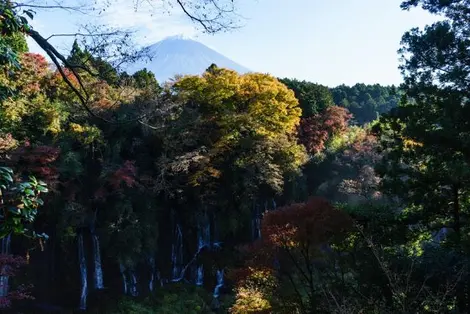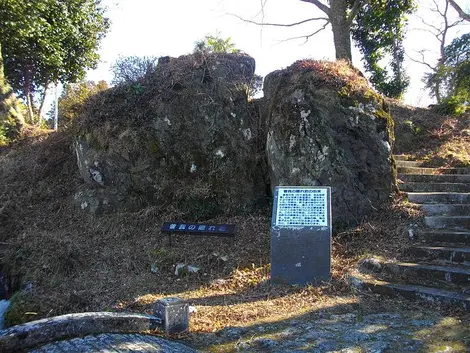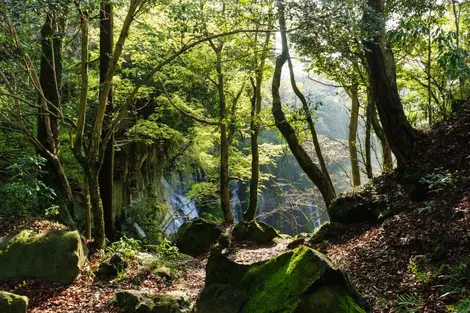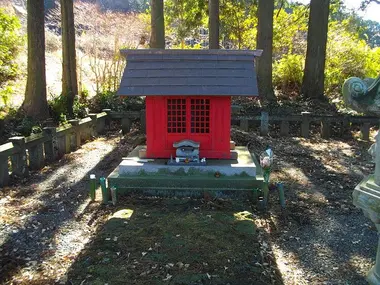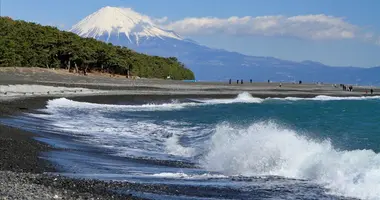Shiraito and Otodome waterfalls 白糸の滝・音止の滝
- Published on : 23/02/2018
- by : S.V.
- Youtube
The two make a pair
Shiraito and Otodome Falls in Fuji-Hakone-Izu National Park are located southwest of Mount Fuji. Both designated "Natural Monuments" by the Japanese authorities, they feature prominently in the ranking of the 100 most beautiful waterfalls in the archipelago since 1990.
Natural beauties
A few minutes' walk from each other, Shiraito Falls and Otodome can be seen and enjoyed as a duo. Fueled by the rains and melting snow from Mount Fuji , the two ladies linked by the history, legends and worship of the sacred mountain respond to each other, even complement each other. Spilling 1.5 tons of water every second, the " white thread waterfall" ( shiraito no taki ) has the appearance of an ancient theater; measuring 20 meters high and 150 meters wide. Streams of water like delicate threads of silk form the curtain of this natural theater whose beauty is striking! In summer, we come to cool off with the family by settling on the rocks at the edge of the clear waters. While the Shiraito falls can be approached as closely as possible, those of Otodome can be savored from a distance. The Otodome no taki , " sound-stopping waterfall" , is more traditional in appearance; 25 meters high and 5 meters wide.
Read : Hakone-jinja Shrine
sacred waterfalls
Since 2013, Mount Fuji has been listed as a UNESCO World Heritage Site as a sacred place and a source of artistic inspiration, including in its protection perimeter pilgrimage routes , shrines, traditional inns, volcanic formations, lakes, springs and waterfalls of Shiraito and Otodome. Considered sacred, they are venerated with respect to Fujiko, a devotional cult to Mount Fuji. The founder of Fujiko, Hasegawa Kakuggyo (circa 1541-1646) is said to have trained in ascetic discipline in the waters of Shiraito Falls, making the place a place of pilgrimage . Over the centuries, many pilgrims have come to the site, contributing to the reputation of the place. In 1832, followers of Fujiko erected a stone stele in honor of Jikigyo Miroku, student and successor of Hasegawa Kakugyo. Finally, it is possible to see Mount Fuji in the background of Shiraito Falls from the path up the stairs.
Read : Fujigoko, the five lakes region
A legendary revenge
Do not hesitate to stroll around the falls; these are full of small hidden treasures linked to a historical episode of the 12th century, taken up in a good number of stories, kabuki plays and ukiyo-e prints. In 1193, the shogun Minamoto no Yoritomo (1147-1199) organized a hunting party in the plains of Mount Fuji to which he invited warlords and thousands of soldiers. On this occasion, the shogun would have stopped at the edge of a natural pool dug in the rock to cool off and comb his hair with this pure deep blue water. This rocky cavity , obinzu , located on the heights, west of Shiraito Falls is also a sacred place of worship of Mount Fuji.
See : The 7 waterfalls of Kawazu
However, the most striking fact of this hunting party is the revenge of the Soga brothers known as one of the three great revenges of Japan ( sandai adauchi ). In the middle of one night, the Soga brothers, Goro and Juro, kill Kudo Suketsune, their father's assassin. To do this, hidden behind a huge rock near the Otodome Falls, the brothers work out the final details of their plan. Embarrassed by the deafening noise of the waterfall, the brothers manage to put an end to it by prayer and carry out a revenge fomented for seventeen years . Kudo Suketsune's tomb is located on site; a commemorative ceremony takes place every year in mid-April. As for the rock of the Soga brothers, this one is to the east of the fall. The Otodome Waterfall takes its name from this epic tale; major work of medieval Japanese literature.
Address, timetable & access
Address
Phone
Office de tourisme : +81 (0) 0544-22-1155Timetable
30 min by bus from JR Fujinomiya arePrice
FreeWebsite
http://www.city.fujinomiya.lg.jp/kankou/llti2b00000018ez.html









